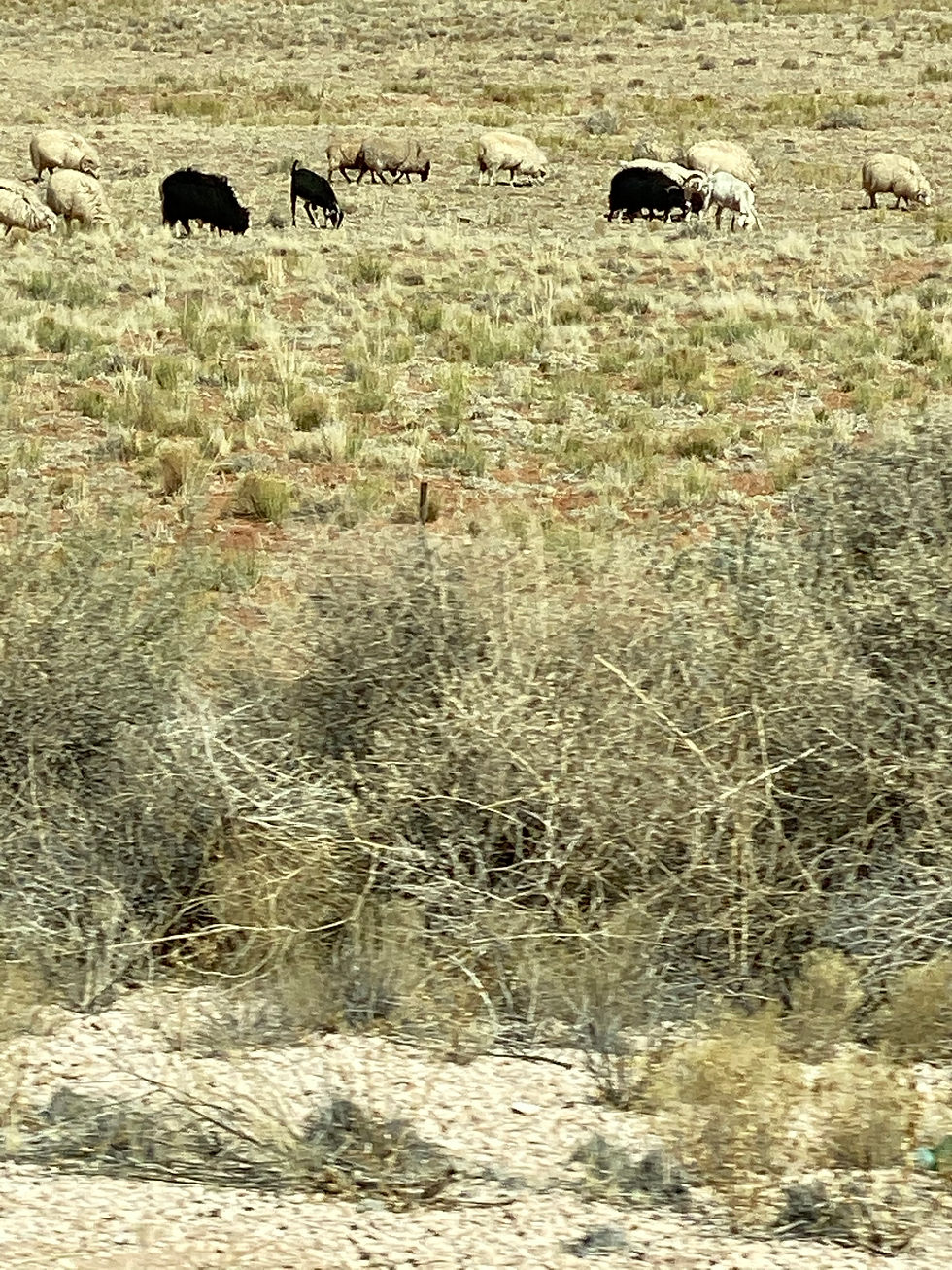This is the scenery we saw on the Navajo Nation traveling along route 89.
Along this section of route 89, you see where mining has occurred. Unfortunately, I do not know what type of mining took place in this area. I will have to do some additional research.
At one time though, large uranium deposits were mined on and near the Navajo Reservation and these were developed through the 20th century. The mining of uranium endangered thousands of Navajo workers, as well as producing contamination that has persisted in adversely affecting air and water quality, and contaminating Navajo lands.
Do some of these pictures show tailings or overburden? Michael and I had a long discussion on the this fascinating topic.
Tailings
Tailings, also called mine dumps, culm dumps, slimes, tails, refuse, leach residue or slickens, are the materials left over after the process of separating the valuable fraction from the uneconomic fraction of an ore. Tailings are distinct from overburden, which is the waste rock or materials overlying an ore or mineral body that are displaced during mining without being processed. The extraction of minerals from ore can be done two ways: placer mining, which uses water and gravity to extract the valuable minerals, or hard rock mining, which uses pulverization of rock, then chemicals. In the latter, the extraction of minerals from ore requires that the ore be ground into fine particles, so tailings are typically small and range from the size of a grain of sand to a few micrometers. Mine tailings are usually produced from the mill in slurry form. In some situations, tailings represent an external cost of mining This is particularly true of early mining operations which did not take adequate steps to make tailings areas environmentally safe after closure. Modern day mines, particularly in jurisdictions with well-developed mining regulations or operated by responsible mining companies, often incorporate the rehabilitation and proper closure of tailings areas in the mining costs and activities.
Overburden
In mining, overburden (also called waste or spoil) is the material that lies above an area that lends itself to economical exploitation, such as the rock, soil, and ecosystem that lies above a coal seam or ore body. Overburden is distinct from tailings, the material that remains after economically valuable components have been extracted from the generally finely milled ore. Overburden is removed during surface mining, but is typically not contaminated with toxic components.
For me, it makes a unique landscape to photograph. It is so desolate but yet so beautiful.
Gorgeous colors and formations!








Cameron Suspension Bridge
The Cameron Suspension Bridge crosses the Little Colorado River.
The bridge has an overall length of 680 feet (210 m) and a main span of 660 feet (200 m).
The bridge towers rest on the rim of the canyon, with concrete dead-men anchoring the suspension cables some way back from the towers. The deck is stiffened by a Pratt through-truss, with a 14-foot (4.3 m) wide roadway.
The Cameron Suspension Bridge is the oldest suspension bridge in Arizona, and one of only two of that type in the state.
The Cameron Suspension bridge was added to the National Register of Historic Places on June 5, 1986.



















Every so often you see stands where the Navajo sell jewelry, rugs, pottery, etc. Talented people!

To me, this looks like a dream catcher at the front of the stand. The dream catcher is a protective talisman that is used to protect people from nightmares and bad dreams. The dream catcher is a handmade willow hoop, on which is woven a net or web. The dream catcher may also include sacred items such as certain feathers or beads.The charm was usually used for young children and hung above their cradles or beds. Native American cultures believe that both good and bad dreams fill the air at night. Though some American Indian tribal members see no problem with the practice of making dream catchers, others regard marketing of dream catchers as another example of their culture being picked apart. Most believe that the best color to choose for a dream catcher is white and blue symbolic of hope and pureness. The color white also represents freshness, goodness, light, simplicity and coolness which make it the best option.

I always wonder what animals make their home amongst these rocks.












How much dynamite was used and how long did it take to blast through this much rock?

Not much vegetation for the sheep and goats to eat.










Opmerkingen